Neuroprotection: a guide to the latest equipment
Neonatal hypoxic-ischaemic encephalopathy in infants is caused by lack of oxygen to the brain, resulting from brain injury and sustained trauma during delivery. There is a need for neuroprotective strategies and therapies to be developed to support the developing brain and prevent disability. In the case of neuronal injury, neuroprotective interventions are intended to help the brain reduce neuronal cell death. Clinicians have a six hour window in which to initiate active cooling in order to prevent further brain cell death. Brain activity will be monitored with continuous electroencephalography (EEG) to identify any seizure activity. At the appropriate time, the infant will then gradually be rewarmed.
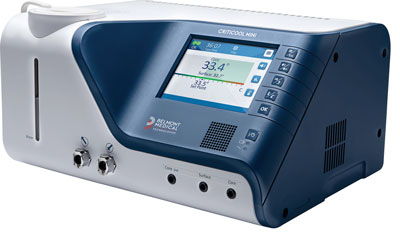
The CritiCOOL MINI set to start active cooling.
Belmont Medical Technologies’ CritiCool MINI delivers targeted patient temperature management in a compact package, leveraging similar technology to the CritiCool thermal regulating system. Battery-powered, lasting up to 60 minutes, and only 11kg (24lb), the portability of the MINI makes it especially relevant in emergency, neonatal and intensive care situations. Simple and precise, the CritiCool MINI device pairs with the CureWrap single-use garment for advanced patient temperature management. Clinicians just to set the desired temperature on the CritiCool MINI device, wrap the appropriately sized CureWrap garment around the patient and start to cool the patient to the set temperature. The patient will then be rewarmed through controlled, monitored rewarming.
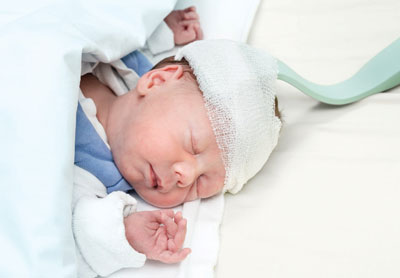
OxyPrem’s soft silicone hull is made for comfortable wear.
OxyPrem is a new system for measuring brain oxygen levels in the preterm infant using light to determine absolute haemoglobin oxygen saturation in human tissue. Advanced algorithms provide consistent readings, across varying perfusion environments and the equipment can be used in any patient at risk of hypoxia. Being glue-free, there is no risk of skin damage and, as it is reusable, it is cost-effective. The OxyPrem product has two year light sensor life time and high quality components.
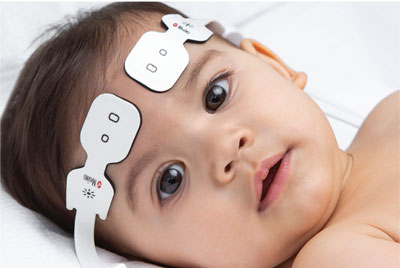
The O3 neonatal sensor easily conforms to and allows for ergonomic application on small foreheads
Masimo newborn sensors are designed to provide reliable, high quality monitoring data during the first moments of life. NeoPT sensors are speciality sensors for use on the cyanotic patient. These sensors are tailored to support the unique physiology of the neonate. SofTouch speciality sensors for neonatal and infant care allow for gentle application on fragile newborn and pre-term babies.
Rainbow Sensors, when used with Masimo Rainbow SET (Signal Extraction Technology) pulse CO-oximeters, provide non-invasive and continuous monitoring of SpO2 and methaemoglobin. Blue Sensors are designed specifically for use on cyanotic neonatal, infant and paediatric patients with congenital heart disease and oxygen saturation ranging from 60% to 100%. Newborn Sensors automatically configure SET and Rainbow SET devices to a fast averaging time and maximum sensitivity settings. Velaid SofTouch design allows for quick application and repositioning on newborn skin.
The O3 Regional Oximetry Platform has been expanded to allow monitoring of infant and neonatal patients <10kg. With its reduced size and flexible design, the O3 neonatal sensor easily conforms to and allows for ergonomic application on small foreheads. It allows simultaneous application of SedLine and O3 sensors when monitoring patients.
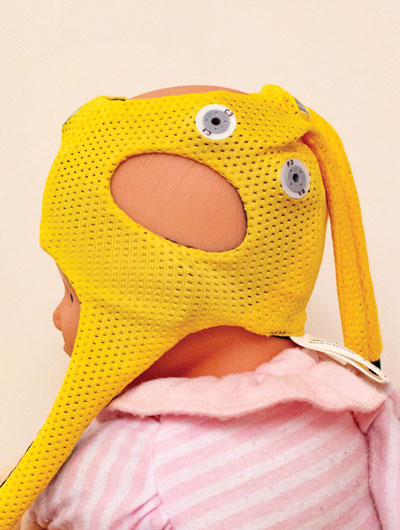
The nëo Waveguard cap is easy to apply.
The nëo aEEG Monitor is available in the UK from supplier of developmental care products Central Medical Supplies. Manufactured by ANT Neuro, nëo is easy to use and simplifies cerebral function monitoring. nëo has many enhanced features and comes with new nëo viewlite software, for viewing aEEG data remotely. Actively shielded Waveguard EEG caps make it easy to attach the electrodes, saving time and resources. With up to 8-channel continuous EEG referential, nëo provides diagnostic values to paediatric neurologists with extended coverage and improved seizure detection.
nëo also provides graphical indicators for interburst interval. Burst suppression ratio quantifies burst suppression patterns, to assist healthcare professionals in making informed decisions with regards to interventions.
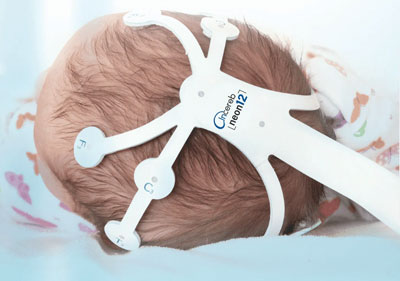
Incereb Neon electrode array kits are designed to be easy to use.
Lifelines Neuro supplies single-use electrode arrays for infant EEG brain monitoring. Traditionally, neonatal EEG monitoring involves head measurement and the application of electrodes by a registered EEG technologist. Streamlining the neonatal EEG process, Incereb Neon electrode array kits are designed to simplify and improve the neonatal EEG process, and ensure that every newborn that requires an electroencephalogram has access to one, even when an EEG technologist is not available.
Incereb Neon’s infant electrode array placement ensures precise symmetry for intra-hemisphere data comparison. They are ideal for out-of-hours use in the NICU, neonatal clinical trials and routine EEGs in satellite hospital settings. NICU nurses or any trained clinician can open the pack, remove the device and, using gels and pastes of choice, apply the electrode array against the baby’s scalp.
Being non-invasive there are no needles, making it safe for babies and caregivers. They have a long shelf life and take up little storage space. The neonatal electrode arrays are available in two sizes, the Incereb neon 8 and Incereb neon 12. The system is compatible with all main brands of EEG, CFM and amplitude integrated EEG systems.


